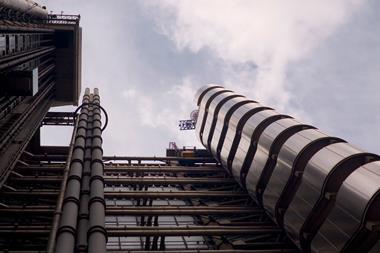The insurer increased its loss estimate for Covid-19 to $42m
Lancashire has fallen to a $23m (£17.5m) loss before tax for the first six months of 2020 after the insurer increased its Covid-19 loss estimate to approximately $42 million, up from approximately $35 million, net of reinsurance and reinstatement premiums.
This meant that the impact of Covid-19 added 17.4 percentage points to the insurer’s loss ratio, which stands at 57.4% for the first half of 2020, compared to 34.5% for the same period in 2019.
Despite these headwinds, group chief executive officer Alex Maloney said the Covid-19 pandemic also presented opportunities for future growth.
“In the face of the challenges generated by the Covid-19 pandemic to both sides of the balance sheet, there has been a retrenchment in (re)insurance market risk capital and capacity,” he said. “In the year to 30 June 2020, we have witnessed double-digit percentage rate increases in many of our lines of business and accelerated rating dislocation in the catastrophe exposed reinsurance lines, resulting in rises in the range of 20%-30% for 1 June renewals in Florida.
“I believe that the economic fundamentals now dictate that this pricing trend is likely to strengthen throughout 2020 and into 2021 across a number of our business lines, and that current market conditions present an attractive opportunity for growth consistent with our strategy of deploying capital in line with the insurance market cycle.”
To take advantage of this opportunity for growth, the insurer raised $352m through an equity capital raise in June.
Maloney added that this would present opportunities for both new and existing business lines: “In a rapidly changing market, we are seeing attractive opportunities to develop many of our existing lines of business and to establish new ones. Our business is well positioned to grow our underwriting portfolio and to develop opportunities to improve the risk adjusted returns for our business and our investors.”
Premium Growth
Lancashire grew its gross written premium (GWP) to $495.5m for the first half of 2020, up from $429.6m for the same period in 2019.
The group’s biggest growth came from the property sector, which was driven primarily by new business across all of the property classes, with rate and exposure increases also a strong contributor to this growth.
Compared to the prior year, Lancashire said the second quarter renewal season was particularly strong, and saw the Group benefit from the hardening pricing environment. This contributed to significant growth in the property catastrophe class of business in the second quarter.
These increases were partially offset by a reduction of premiums in the political risk class, which is largely a non-renewing book, plus a reduced level of reinstatement premium compared to the same period in 2019.
Meanwhile, Lancashire’s net investment income, excluding realised and unrealised gains and losses, fell by 24.0% to $14.9 million for the first six months of 2020.
Hosted by comedian and actor Tom Allen, 34 Gold, 23 Silver and 22 Bronze awards were handed out across an amazing 34 categories recognising brilliance and innovation right across the breadth of UK general insurance.


















































No comments yet